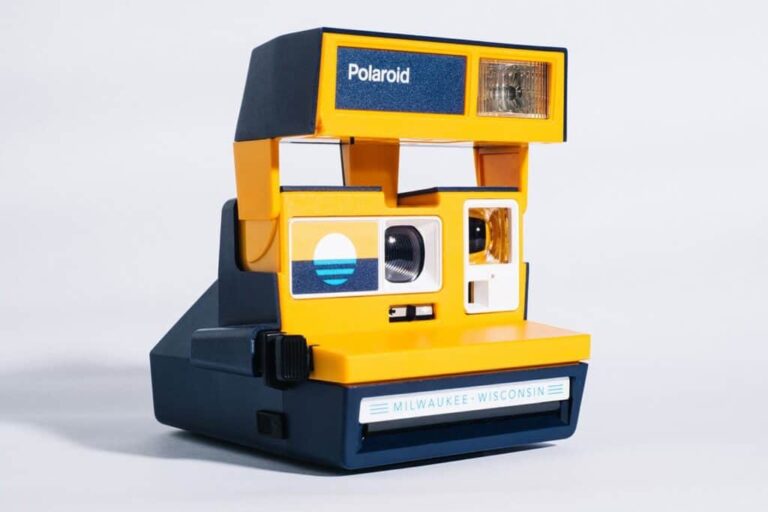How To Send A Follow Up Email After No Response: Strategies For Success
In our fast-paced digital world, it’s easy for emails to slip through the cracks. You press send, yet sometimes it feels like your message vanishes into a black hole of inboxes. If you’ve ever found yourself staring at the screen, wondering if your follow-up will get any attention, you’re not alone. Sending a follow-up email can feel daunting, but with the right strategies, you can encourage responses without coming off as pushy. This guide will walk you through effective techniques that can help make your follow-ups count, ensuring your communication hits the mark every time.
To effectively send a follow-up email after no response, wait at least two days before reaching out again and ensure your message is concise, friendly, and includes a clear call-to-action. Remember to personalize the content by referencing any previous interaction and providing value to encourage engagement.
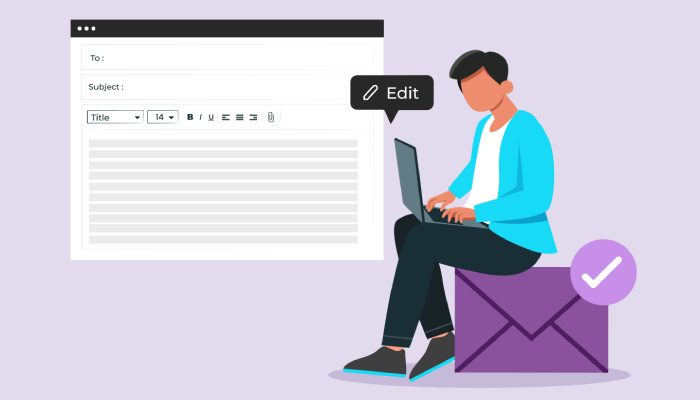
Steps for Sending a Follow-Up Email
First, it’s essential to start with a polite greeting. This may seem simple, but opening your email with a respectful tone sets the stage for positive engagement. For instance, addressing the recipient by their name, such as “Hi [Recipient’s Name],” instantly makes your message feel more personalized and warm. This small detail shows you value the recipient’s individuality, making them more inclined to respond.
After establishing that courteous tone, the next step is to jog their memory about your last contact.
Reference previous correspondence in your email to create context. By stating something like, “I hope you had a chance to review my previous email sent on [specific date],” you remind them of what was discussed and reinforce the importance of the ongoing conversation. This gentle nudge helps recipients recall your initial inquiry without feeling overwhelmed or pressured.
Once you’ve reminded them of your earlier communication, it’s time to clearly articulate your purpose.
Be direct and concise about why you are following up. Clearly stating something like, “I’m writing to follow up on my previous email regarding ” provides clarity and focus for your message. You want to ensure the recipient understands that this is not just another friendly reminder, but rather a meaningful continuation of a conversation that requires their attention.
Now that you’ve defined your purpose, you should strive to add value or solicit further information.
Offering something beneficial or asking a specific question can give them a compelling reason to respond. For example, including a relevant resource—”I have attached a case study that could provide insights into “—may prompt positive engagement. Alternatively, posing questions such as, “Do you need further information to make a decision?” encourages dialogue and opens the door for further interaction.
Ending on a positive note is equally critical as how you began.
Close your email with a polite statement that leaves room for continued communication. Phrases like “Looking forward to your response,” carry an optimistic undertone and indicate that you anticipate their feedback. Pairing this closing with “Best regards,” or similar sign-offs maintains professionalism while conveying warmth.
Integrating these techniques into your follow-up emails can significantly improve responsiveness and foster stronger connections through thoughtful communication. To enhance these efforts further, it’s valuable to understand how well your Nureply emails perform in achieving desired outcomes.
Assessing Email Performance

Understanding how your emails perform is not just about collecting numbers; it’s about using that information to refine your communication and increase engagement with your audience. By regularly evaluating key metrics, you can pinpoint areas for improvement, ensuring that your follow-ups resonate with recipients and drive responses.
Key Metrics to Track
| Metric | Description |
| Open Rate | The percentage of recipients who open your email. Indicates subject line efficacy. |
| Click-Through Rate | The percentage of recipients who click on any links within your email. Shows engagement. |
| Response Rate | The percentage of recipients who reply to your email. Measures overall effectiveness. |
| Bounce Rate | The percentage of emails not delivered. Indicates list health. |
| Unsubscribe Rate | The percentage of recipients opting out. Reflects your email’s relevance. |
By focusing on these essential metrics, you gain valuable insights into how your emails are performing at each stage of the communication process. A higher open rate often signifies that your subject lines are catching attention, but what happens next? If your click-through rates are low despite good opens, it suggests that while people are interested enough to open the message, they might find the content lacking or unengaging.
This brings us to a critical aspect: analyzing the data itself.
Analyzing the Data
It’s not enough to simply look at the numbers; you must dig deep and examine patterns within them. Ask yourself questions like: “What types of subject lines yield higher open rates?” or “Are there certain times when my emails receive more responses?” Dissecting performance trends will reveal which elements resonate well with your audience and which fall flat.
For example, high open rates combined with low response rates suggest that while the subject lines are compelling, the content may not be delivering enough value or clarity. You might want to revisit how you engage readers with your messages—consider offering additional resources or addressing common pain points more explicitly.
Moreover, look at feedback from unsubscribe rates as a vital indicator of perceived relevance. A rising unsubscribe rate may signal that recipients feel overwhelmed by your emails or perceive them as unbeneficial. In contrast, a stable or declining rate could mean you’re hitting the mark with your audience and providing value.
Tracking and analyzing these metrics isn’t merely about checking boxes; it allows for iterative improvements in your email strategies—transforming missed opportunities into successful engagements over time. As you refine and adapt based on this analysis, you create a framework for ongoing conversations that keep your audience engaged.
With a solid foundation in understanding email performance established, let’s explore practical applications that can enhance communication effectiveness further.
Effective Email Templates

Using templates for follow-up emails not only saves precious time but also ensures a consistent messaging approach that resonates with recipients. These templates serve as a solid foundation, allowing you to focus on personalizing details unique to each recipient while maintaining professionalism throughout your communications.
One strategy is to employ a friendly reminder template. Friendly reminders help jog the recipient’s memory without coming off as overly persistent. For instance, consider starting your email with a subject line like “Just Checking In”. This approach establishes an inviting tone. Here’s a simple structure you might use:
Subject: Just Checking In
Hi [Recipient’s Name],
I wanted to check if you had a chance to review my previous email regarding [subject].
Looking forward to your response.
Best regards,
This template can be effective because it politely nudges the recipient while reminding them of your earlier outreach, making it easy for them to re-engage.
Beyond just reminders, another compelling template focuses on providing value; this can significantly increase the likelihood of a reply while establishing trust. By sharing valuable resources or insights, you demonstrate investment in their needs rather than just pushing for a response.
Offering Value Template
A well-crafted value offering email could begin with a subject line such as “New Insights for [Topic]”. Such a headline catches attention, suggesting that what follows is relevant and beneficial. Here’s how that might look:
Subject: New Insights for
Hi [Recipient’s Name],
I hope this message finds you well. I wanted to follow up on my last email and share a valuable resource that might be helpful for [specific reason].
Please let me know if you have any questions.
Best regards,
Here, you not only reiterate your previous contact but also position yourself as someone looking to assist—an approach that often garners respectful engagement and goodwill.
While these templates provide frameworks, the true power lies in adapting them to fit each unique interaction. Your goal should always be clarity and relevance tailored specifically to the recipient’s context and interests, ensuring every email feels like a personalized conversation rather than just another outreach attempt.
Remember to frequently revise your templates based on feedback and results from prior communications. Experimenting with different approaches allows you to refine your strategy continuously, maximizing effectiveness at every step along the way.
As we explore further, understanding the timing of your outreach can play a pivotal role in enhancing engagement with your recipients.
Timing Your Follow-Up
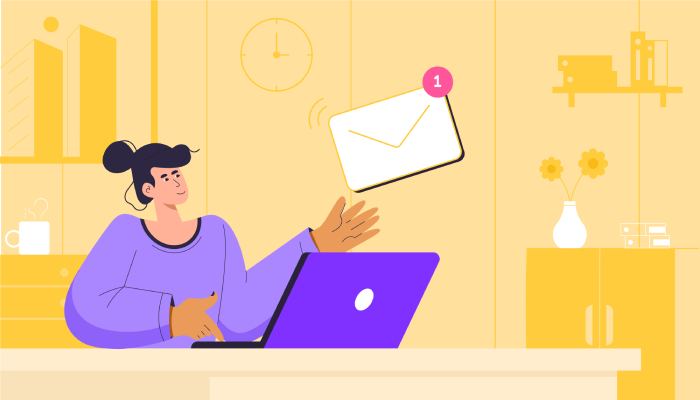
The timing of your follow-up email plays a significant role in determining whether it will garner a response or fade into the abyss of unread messages. Just imagine sending an email at the end of the workday, right when everyone is wrapping up their tasks for the week. Chances are, your meticulously crafted message will get lost among urgent deadlines and weekend plans. Instead, knowing the optimal times to send follow-up emails can help ensure that your correspondence receives the attention it deserves.
Optimal Timeframes
Research indicates that mid-morning, specifically between 10 AM and 11 AM, is one of the most effective windows for sending out follow-up messages. Many professionals are settling into their day by this time, checking their inbox and prioritizing tasks before diving into more complex projects. Likewise, another good time frame falls during mid-afternoon, roughly from 2 PM to 3 PM. By planning your emails around these periods, you increase the likelihood of capturing recipients while they are actively engaged with their workflow.
As many as 24% of emails are opened within the first hour of being sent. This statistic highlights why timing your communication effectively is crucial.
However, it’s not just about what time you send your email; it’s also important to consider how long you wait before following up.
Follow-Up Intervals
After initially reaching out, patience is key. It’s recommended to wait at least 2 to 3 days before sending your first follow-up email. This gives recipients ample time to sift through their inboxes and reflect on your previous correspondence without feeling overwhelmed. Think of it as giving them breathing room while still keeping your inquiry fresh in their minds.
If after your first follow-up you still have no response, waiting an additional 5 to 7 days for any subsequent outreach will help preserve both persistence and professionalism. Each interaction should be approached thoughtfully; therefore, adapting the content of your follow-ups based on their timing will also show consideration for recipient schedules.
With an understanding of timing and intervals under your belt, we can now explore how to craft messages that compel action and engagement.
Writing a Persuasive Message

Crafting a persuasive follow-up email isn’t just about reiterating what was previously discussed; it’s about creating a sense of urgency and relevance that compels the reader to respond. Utilizing clear and persuasive language is key. Think of your words as tools: each sentence should function like a building block, designed to construct a persuasive argument that draws the recipient in. For example, instead of saying, “I think this service might help,” frame it as, “This service addresses your specific challenge in increasing customer engagement, ensuring you can meet your goals effectively.” Framing your points in this manner not only highlights benefits but also evokes curiosity about how exactly your solution can work for them.
Remember, however, that while being compelling is crucial, it should never cross into overpromising territory. Just as you wouldn’t walk into a store promising the customer their life will change if they buy a pair of socks, don’t exaggerate the benefits in your emails either.
Key Elements of Persuasion
Consider your follow-up email as a miniature sales pitch. It engages the recipient’s attention and makes them think: “How does this apply to me?” Utilize strong opening lines that hook interest immediately. Open with compelling facts or short anecdotes relevant to their circumstances. This approach humanizes the interaction and fosters connection.
It’s also beneficial to employ subtle psychological tactics that prompt action. Phrasing such as “I would love to hear your thoughts on this” invites engagement without being pushy. It’s essential to create an atmosphere where the reader feels valued and understood, rather than pressured.
Additionally, the structure of your email matters significantly. A well-organized email using short paragraphs or bullet points allows for quick skim-reading—a necessity in today’s fast-paced communication environment. By breaking up information visually, you encourage recipients to digest content without feeling overwhelmed.
Tailoring Your Message
Customization is another vital factor in writing an effective follow-up email. To ensure your message resonates with the recipient, it’s essential to tailor your content specifically for them. Mentioning relevant details—such as their recent project success or industry changes—shows that you are engaged with their context and challenges. This not only makes your message feel personal but establishes trust.
By integrating specific insights from previous conversations or interactions, you’re not merely following up; you’re demonstrating active listening and genuine interest in their situations. When people feel personally acknowledged and understood, they are more likely to engage positively.
Lastly, always conclude with a clear call-to-action (CTA) that defines exactly what you want from them—whether it’s scheduling a call, providing feedback, or checking out additional resources. Craft this CTA such that it’s aligned with their individual needs and timelines; clarity fosters engagement.
Implementing these strategies enhances not only the effectiveness of your messages but also greatly increases the chances of receiving thoughtful responses that help facilitate ongoing dialogue.
Handling No Responses
It’s almost a rite of passage in the world of communication—sending out emails and being met with silence. The key is to view no responses not as personal failures but as opportunities to refine your approach. Understanding the dynamics of follow-up interactions is crucial. This begins with a moment of reflection. After sending your original email, take a step back and assess its content. Was it clear? Engaging? Did you provide relevant value to entice the reader’s interest? If there’s an opportunity for improvement, acknowledge it and adjust your strategy for future efforts.
Once you’ve taken stock of your initial message, it’s time to consider your next steps.
Steps to Take
When faced with radio silence, a well-timed final follow-up can work wonders. It’s important to frame this as a courteous reminder rather than an aggressive nudge. A simple statement like “This will be my last email regarding [subject]. Please contact me if you’re still interested” not only signals your intention to move on but also leaves the door open for them to respond if they choose. This approach creates a sense of urgency without coming across as pushy, akin to gently tapping someone on the shoulder rather than shaking them awake.
However, if there’s still no response after this polite reminder, it’s essential to let go gracefully.
Moving on is not just about accepting defeat; it’s about channeling your energy elsewhere. Repeatedly reaching out can be perceived as intrusive, which might tarnish your reputation. Redirecting your efforts towards other prospects preserves your professionalism and allows you to find fresh opportunities. Remember, persistence is valuable, but so is recognizing when it’s time to pivot.
Adopting this method of responding to silence not only maintains your credibility but also fosters an environment conducive to future connections that could lead to fruitful interactions down the line.
Building Professional Relationships
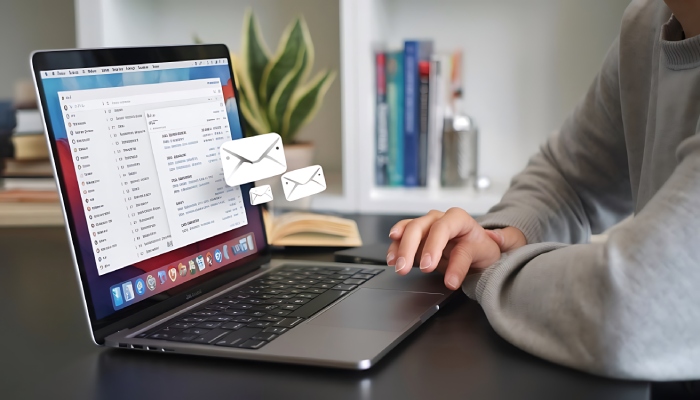
A simple “hello” or a well-placed follow-up can lead to friendships that benefit both parties professionally. Establishing rapport doesn’t just happen overnight; it’s an ongoing process that requires consistency, trust, and genuine interest in the needs of others. Whether you’re reaching out after a conference or simply checking in, these seemingly small gestures show that you value the other person’s time and expertise.
Maintain Professionalism
It’s crucial to keep a tone that is both professional and approachable. An effective way to achieve this balance is by starting your emails with kind words that acknowledge your previous interaction. Phrases like, “It was great connecting with you during [event],” not only remind them of who you are but also express gratitude for their engagement.
However, while such friendly interactions are important, be cautious not to cross into overly familiar territory. Maintaining boundaries is essential; think of it as walking a fine line between warmth and professionalism.
That foundation of respect sets the stage for more open communication, enabling a smoother transition into the next effort: consistently providing value.
Keep Providing Value
Nurturing professional connections involves offering repeated value without being asked. This could mean sharing industry updates, articles related to recent conversations, or even insights on projects they might find beneficial.
For example, if you learn something new about changing regulations in your industry or discover a useful tool for productivity, sending a brief note about it can reinforce your position as a reliable contact. It shows you’re not just after taking; you also care about sharing relevant information that could help them succeed.
Additionally, such outreach positions you as an engaged member in your field rather than an isolated entity only contacting them when you need something. By frequently providing helpful resources, you’re nurturing a relationship that goes beyond transactional exchanges—you’re building a sense of mutual respect and advocacy.
Following up leaves a door open for many possibilities down the road; each email becomes an opportunity not just for connection but also collaboration. As we explore further strategies, consider the tools that can enhance your approach and elevate your follow-up game.
Tools to Enhance Your Strategy
Utilizing specialized tools can significantly improve your efficiency when sending follow-up emails. Instead of drowning in a sea of messages, consider these powerful options to help automate tasks, track engagement, and keep your communication consistent. Each tool offers unique features, making it easier for you to focus on crafting meaningful messages rather than managing the logistics of sending them out.
Recommended Tools
| Tool | Description |
| Boomerang | This fantastic tool allows you to schedule your emails for later delivery while offering reminders for when to follow up. Imagine setting multiple reminders with just a few clicks! |
| Yesware | Perfect for understanding how recipients engage with your emails, Yesware tracks when your messages are opened and whether links are clicked. This insight helps tailor your messaging effectively. |
| Mailtrack | A simple yet effective solution for Gmail users that notifies you when your sent emails are opened, removing the guesswork from follow-ups. |
| HubSpot | A comprehensive CRM platform that offers email tracking and robust automation features, allowing customization at every stage of your outreach efforts. |
Harnessing these tools provides a dual benefit: they help maintain organization while allowing for personalization in your interactions. For example, one marketing manager noted that using Yesware improved their follow-up response rate by an impressive 25%. However, they emphasized that it was the personalized touches in their messages that ultimately made all the difference in sealing the deal.
This tells us that there’s an important balance between automation and genuine connection—one can enhance the other if managed properly.
With these tools at your disposal, you’ll find sending follow-ups becomes less daunting and much more manageable. This enables you to maintain valuable relationships seamlessly while maximizing your outreach effectiveness.
In today’s fast-paced world, leveraging tools coupled with personalization is key to successful communication. By blending technology with genuine connection, you set yourself up for lasting engagement.
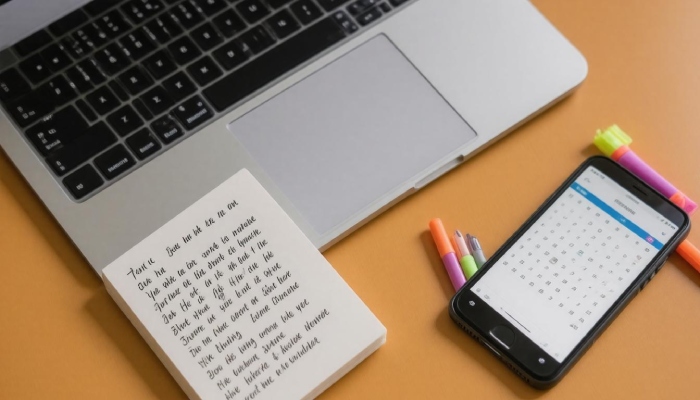
How can I politely remind the recipient about my previous email without sounding pushy?
A polite reminder can be crafted by starting with a friendly greeting and expressing understanding for the recipient’s busy schedule. For example, you might say, “I hope this message finds you well! I wanted to check in regarding my previous email about [subject] when you have a moment.” This approach respects their time while subtly nudging them without coming across as pushy. Research shows that follow-up emails increase response rates by as much as 30%, so don’t hesitate to remind them courteously!
What should I include in my subject line to increase the chances of a response?
To increase the chances of a response, use a subject line that is clear, concise, and personal. Incorporating the recipient’s name or referencing the previous conversation can create a sense of familiarity and urgency. Studies show that emails with personalized subject lines have higher open rates—up to 26% more than generic ones. Make sure your subject line hints at value or relevance, such as “Following Up on Our Discussion About [Topic],” to encourage engagement.
What strategies can make my follow-up email more engaging and likely to elicit a reply?
To make your follow-up email more engaging and likely to elicit a reply, personalize your message by mentioning specifics that relate to the recipient’s interests or previous conversations—this shows you value their time and input. Additionally, consider including a call-to-action that is clear and relevant, such as a question or an easy-to-answer prompt. Statistics show that personalized subject lines can improve open rates by 26%, and emails with questions get 50% more responses than those without. Using these strategies can significantly enhance your chances of receiving a reply.
Should I change my approach in a follow-up email based on the type of relationship with the recipient (e.g., professional vs. personal)?
Yes, you should absolutely change your approach based on the type of relationship with the recipient. A professional follow-up should maintain a formal tone and emphasize deadlines or project details, whereas a personal follow-up can be more casual and friendly. According to studies, emails that match the tone of the relationship have a higher response rate—professional emails see up to a 40% response rate when tailored appropriately, while personal emails can soar above 60%. Adapting your style shows awareness and respect for the relationship dynamics.
What is the best time frame to wait before sending a follow-up email?
The best time frame to wait before sending a follow-up email is typically 3 to 7 days after your initial message. This allows enough time for the recipient to respond while keeping your email fresh in their mind. According to studies, emails sent within this timeframe have a higher response rate, with a noticeable drop-off occurring if you wait longer than a week. Following up too soon may come across as pushy, whereas waiting too long could mean your message gets lost in the shuffle of their inbox.


